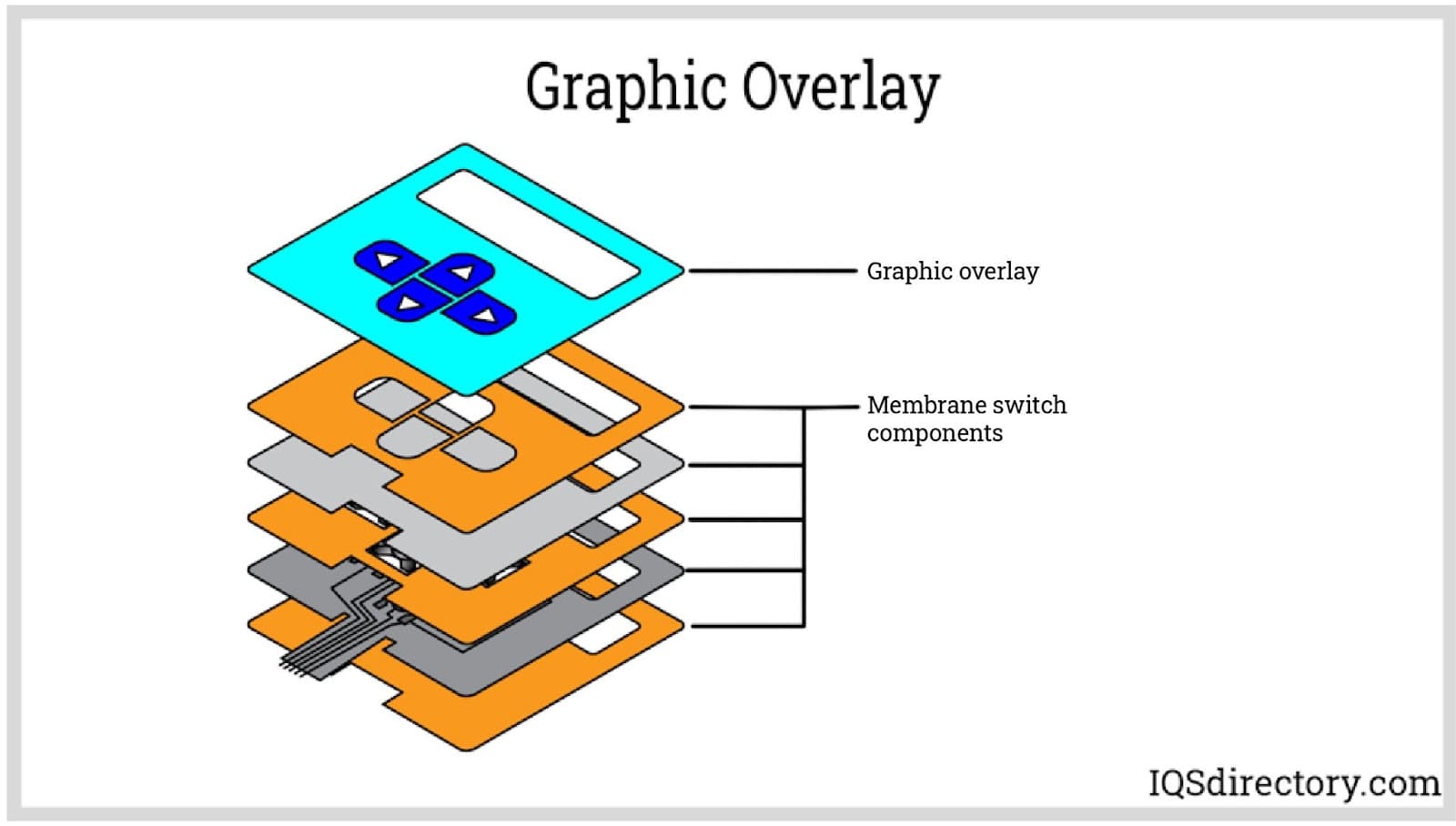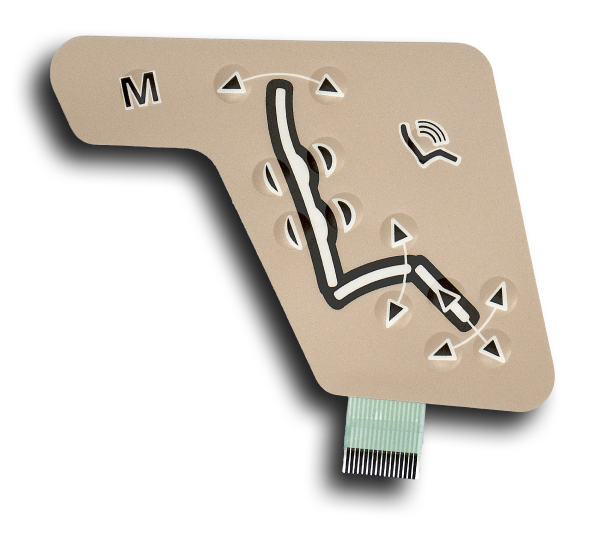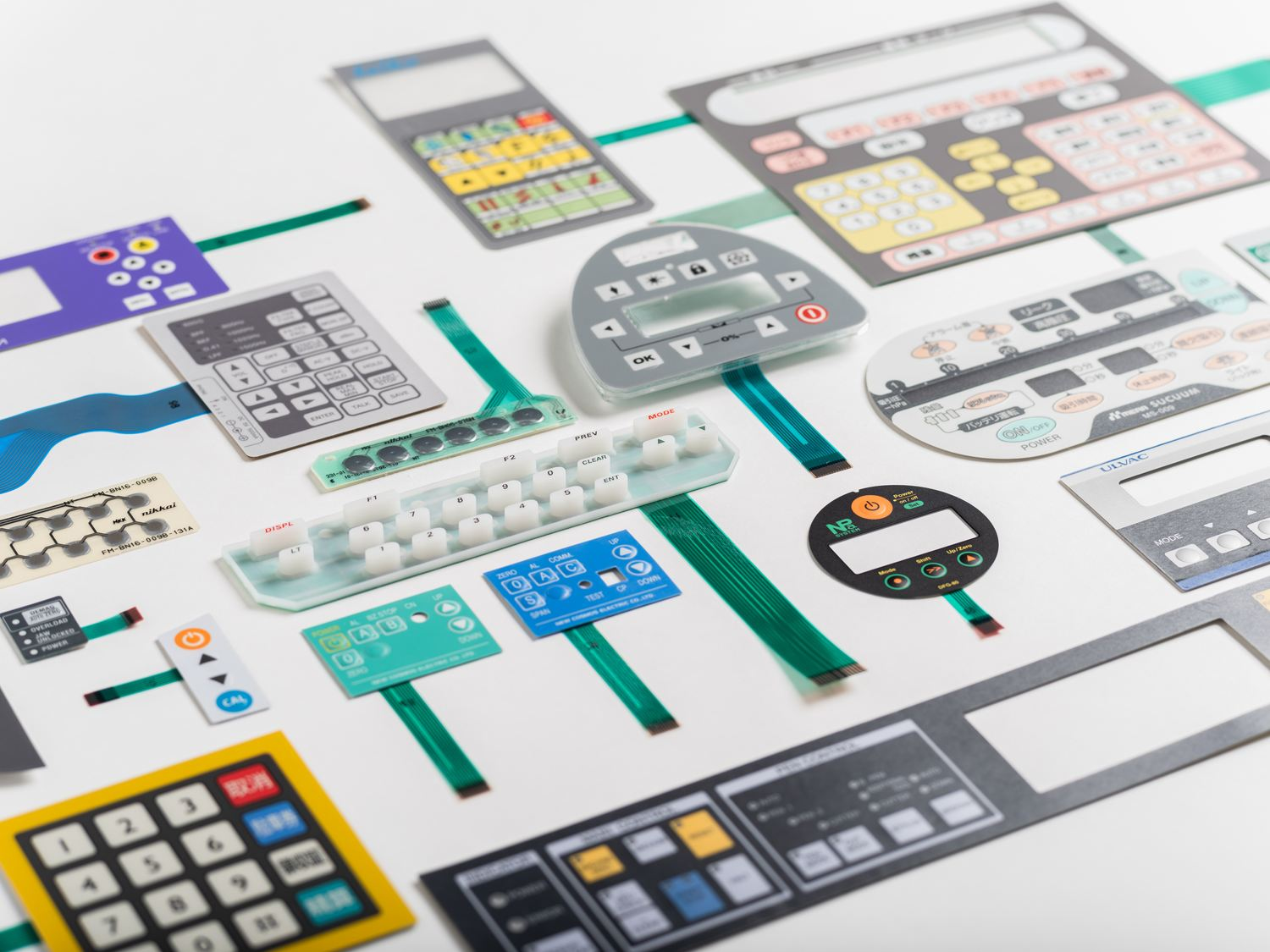Top-Tier Membrane Switch Manufacturer with Quality Accreditation
Understanding the Relevance of Membrane Switch in Modern Electronic Devices and Their Applications
Membrane changes act as an essential part in modern electronics, supplying an efficient user interface for customer interaction. Their light-weight and adjustable nature makes them appropriate for a variety of applications across diverse sectors. Understanding their crucial parts and benefits can offer understandings right into their growing importance. As technology remains to breakthrough, the evolution of Membrane changes increases inquiries about their future applications and style technologies. What exists ahead in this dynamic field?

What Are Membrane Switches?
Membrane switches are essential parts in contemporary electronic devices, working as interface that help with communication between customers and gadgets. These switches are composed of a number of layers, including a graphic overlay, a glue layer, and a circuit layer, all of which collaborate to develop a long lasting and functional user interface. The design enables a level, low-profile option that can be tailored pertaining to dimension, shape, and visual appearance, making them suitable for numerous applications, from customer electronics to clinical devices. The responsive responses offered by Membrane switches improves customer experience, while their resistance to dust and wetness makes them perfect for testing settings. Membrane buttons can incorporate functions such as backlighting and published graphics, even more expanding their functionality. Their convenience and robustness make them a preferred choice in markets where dependability and convenience of usage are paramount, ultimately adding to the seamless procedure of modern-day digital tools.
Key Components of Membrane Switches
While various elements add to the capability of a membrane layer button, 3 key layers play substantial roles in its design and procedure. The top layer, usually made from a long lasting polymer, offers as the user interface for individual interaction, typically featuring printed graphics and symbols. Underneath this is the spacer layer, which preserves the needed distance between the top layer and the circuit layer. This spacer layer guarantees that the button activates only when pushed, protecting against unintended inputs. The circuit layer contains conductive traces that finish the electric circuit when the top layer is dispirited. These traces can be made from numerous products, including copper or silver. Together, these components develop a trustworthy and robust device that is portable and flexible, appropriate for a large variety of digital applications, from household devices to clinical gadgets. Understanding these key parts is vital for appreciating the total performance of Membrane buttons.
Advantages of Using Membrane Switches Over

Membrane Switch Manufacturing Refine
Understanding the Membrane switch production process discloses the elaborate actions associated with producing these essential parts. The process typically starts with the design stage, where specs and formats are produced using specialized software application. Following this, the visuals overlay is printed on a versatile substrate, usually using high-resolution printing methods to assure clarity and precision.Next, the glue layers are used, which serve to bond the different parts with each other. The circuit layers, made from conductive inks or products, are after that printed onto a separate substratum. These layers are very carefully straightened and laminated to produce a functional switch.After setting up, the switches undergo checking to validate functionality and sturdiness. Quality assurance measures are executed throughout the process to recognize and rectify any type of flaws. The completed Membrane switches are packaged and prepared for distribution, ready to meet the demands of contemporary digital applications.
Applications of Membrane Changes in Numerous Industries
Membrane buttons are progressively used throughout different sectors, specifically in clinical tools and customer electronic devices. In the clinical field, they offer reputable control interfaces for gadgets that need exact operation. Similarly, in consumer electronic devices, these buttons enhance user communication by supplying streamlined and receptive interfaces.
Medical Equipment Control
Numerous modern-day clinical gadgets utilize Membrane buttons for streamlined procedure and improved user communication. These buttons supply a trustworthy, durable interface for a selection of applications, consisting of analysis tools, individual monitoring systems, and surgical tools. Their adjustable layouts permit particular formats that can fit the unique demands of healthcare professionals, making sure intuitive navigation and efficient accessibility to important features. Furthermore, Membrane switches are resistant to impurities, making them appropriate for clean and sterile atmospheres. The responsive feedback they supply can improve customer confidence, reducing the threat of errors during essential medical treatments. Overall, the combination of Membrane buttons in medical equipment considerably adds to enhanced functional performance and client security in medical care settings.
Consumer Electronic Devices Interfaces
In the domain name of customer electronic devices, Membrane buttons play a vital duty in improving customer interfaces throughout a variety of tools. These buttons are integral to products such as push-button controls, microwaves, and pc gaming consoles, providing a efficient and straightforward user interface. Their design allows for a seamless combination of graphics and performance, making it possible for suppliers to create sleek, contemporary appearances without compromising usability. Membrane buttons are also known for their resilience, commonly enduring comprehensive use and exposure to various environmental conditions. Additionally, they can incorporate attributes like backlighting and responsive comments, further improving the user experience. As consumer needs for innovative yet instinctive interfaces grow, Membrane changes remain to be a vital part in advancing digital gadget performance.
Design Considerations for Membrane Switches Over
Creating efficient Membrane switches calls for cautious interest to various variables that affect both capability and customer experience. One crucial consideration is the choice of products, as they can affect resilience, tactile responses, and aesthetic appeal. Selecting an ideal adhesive is necessary for ensuring lasting bond and resistance to environmental factors.In enhancement, the design and link layout of the switch must accommodate customer more tips here interaction, with switch sizes and spacing maximized for simplicity of usage. The consolidation of graphics and labeling need to prioritize clearness and visibility under different lighting conditions.Consideration of electric characteristics, such as actuation pressure and switch level of sensitivity, will improve the responsiveness of the Membrane button. Furthermore, the layout ought to suit manufacturing procedures to guarantee cost-effectiveness and timely manufacturing. On the whole, a well-thought-out layout boosts both the user and the performance experience of Membrane switches in contemporary electronic devices.

Future Patterns in Membrane Switch Innovation
As modern technology continues to develop, Membrane switches are poised to integrate new improvements that will enhance their functionality and application in different fields. One considerable pattern is the consolidation of sturdy and adaptable materials, which will enhance the life expectancy and dependability of these switches. Improved surface textures and customizable graphics are also anticipated, allowing for more intuitive user interfaces.Moreover, the integration of smart modern technology, such as touch-sensitive surface areas and haptic responses, is anticipated to enhance individual interaction, making Membrane switches over extra receptive and interesting. Additionally, advancements in printed electronic devices will allow more intricate wiring within thinner profiles, further increasing style possibilities.Sustainability will additionally play an essential function in future advancements, as manufacturers check out environment-friendly materials and manufacturing procedures. In general, these about his patterns will assure that Membrane switches continue to be indispensable and pertinent in an interconnected and progressively digital globe.
Frequently Asked Inquiries
Exactly How Do Membrane Changes Contrast to Standard Mechanical Switches?
Membrane changes offer benefits over traditional mechanical buttons, including lowered size, lighter weight, and boosted toughness. They usually provide a secured surface area, enhancing resistance to dust and dampness, making them optimal for varied applications.
What Materials Are Frequently Used in Membrane Switch Construction?

Can Membrane Switches Over Withstand Extreme Environmental Conditions?
Membrane switches can hold up against extreme ecological conditions, depending upon their layout and materials. High-grade constructions usually feature resilience against temperature variations, humidity, and exposure to chemicals, making them ideal for various demanding applications throughout industries.
How Much Time Do Membrane Changes Commonly Last Before Failure?
Membrane changes typically exhibit a life-span varying from 1 to 10 million actuations, depending on variables such as use regularity, environmental conditions, and making high quality. Normal upkeep can expand their resilience and operational dependability considerably.
Are Membrane Switches Over Customizable for Particular Applications?
Membrane switches are undoubtedly personalized for details applications. They can be tailored in design, performance, and size, allowing manufacturers to meet unique user requirements and enhance item aesthetic appeals while preserving operational effectiveness and longevity. Membrane switches are vital components in modern electronics, offering as customer interfaces that assist in interaction between users and tools. The tactile responses given by Membrane switches over boosts individual experience, while their resistance to dirt and moisture makes them suitable for challenging environments. The unification of graphics and labeling must focus on quality and presence under numerous lights conditions.Consideration of electrical qualities, such as actuation pressure and button sensitivity, will certainly improve the responsiveness of the Membrane button. Improved surface area structures and customizable graphics are additionally expected, allowing for even more intuitive customer interfaces.Moreover, the combination of smart modern technology, such as touch-sensitive surfaces and haptic responses, is expected to improve individual interaction, making Membrane changes more interesting and responsive. Membrane switches over offer benefits over conventional mechanical buttons, including lowered dimension, lighter weight, and improved durability.